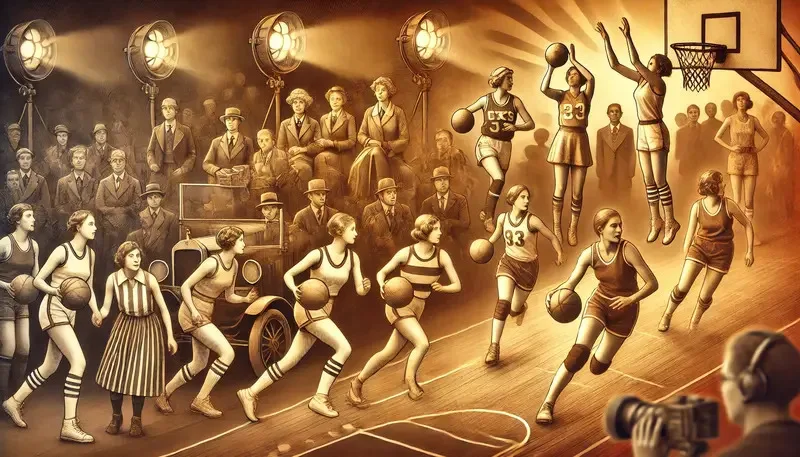Women’s basketball has grown significantly since its inception, with roots going back to the late 19th century. Despite numerous challenges, the sport continues to expand, gaining more recognition and popularity worldwide. This article will explore the historical development of women’s basketball, examine the current challenges the sport faces, and highlight the promising prospects for its future growth.
The Early Years of Women’s Basketball
Women’s basketball traces its origins to 1892, just a year after the sport was invented by Dr. James Naismith. The first game was played at Smith College in the United States, under the guidance of Senda Berenson, a physical education teacher who adapted the rules to suit women. The early years of women’s basketball were characterized by modified rules and limited opportunities for female athletes to compete. Women’s participation in sports was not widely accepted, leading to a slow start for the sport.
As the 20th century progressed, women’s basketball began to gain more traction, especially with the introduction of organized college teams. In 1936, women’s basketball made its first appearance at the Olympics as a demonstration sport, further increasing its visibility on the international stage.
The Development of Women’s Basketball in the International Arena
The inclusion of women’s basketball in the Olympic Games in 1976 marked a turning point for the sport. The global stage provided an opportunity for female athletes to showcase their talent, and the establishment of international tournaments, such as the FIBA Women’s World Cup, helped solidify women’s basketball as a recognized sport.
In the 1990s, the formation of professional leagues, such as the Women’s National Basketball Association (WNBA) in the United States, further advanced the sport’s popularity. Today, women’s basketball continues to grow, with many countries establishing professional leagues and expanding youth programs to foster future talent.
Challenges Facing Women’s Basketball
Lack of Funding
One of the biggest issues facing women’s basketball is the lack of financial support. Many professional leagues, including the WNBA, struggle with lower salaries and fewer sponsorship deals compared to their male counterparts. This financial gap limits the opportunities for female athletes to pursue basketball as a full-time career and affects the overall growth and visibility of the sport.
Lack of Media Support and Coverage
Media coverage is a vital component of promoting any sport, and women’s basketball often falls short in this area. While men’s basketball receives extensive coverage across various platforms, women’s games are often underrepresented. This lack of exposure not only affects the sport’s popularity but also reduces sponsorship opportunities and fan engagement.
Differences in Professionalism Between Countries
The development of women’s basketball varies significantly between countries. In some nations, the sport enjoys robust support, while in others, it remains relatively underdeveloped. This disparity affects the competitive landscape, as countries with better funding and resources dominate international competitions, leaving others at a disadvantage.

Prospects for Women’s Basketball
Growing Popularity and New Leagues
In recent years, the popularity of women’s basketball has surged, particularly in regions like Europe and Asia. The establishment of new professional leagues and youth development programs has contributed to this growth, providing more opportunities for female athletes to compete at a high level.
Improving Conditions for Female Athletes
As awareness of gender disparities in sports increases, there has been a concerted effort to improve conditions for female basketball players. This includes initiatives to raise salaries, increase sponsorship deals, and enhance facilities for women’s teams. The growing support for women’s basketball is a testament to the progress being made toward achieving equality in sports.
Impact of Social Movements on Sport Development
Social movements advocating for gender equality have had a profound impact on the development of women’s basketball. Campaigns like #EqualPlay and the broader women’s rights movement have brought attention to the need for equal opportunities in sports. As these movements gain momentum, they continue to push for more recognition and better conditions for female athletes, ensuring a promising future for women’s basketball.
The development of women’s basketball has been a journey of progress, challenges, and hope. While the sport faces hurdles such as funding gaps and limited media coverage, the prospects for growth are promising. With increased support from new leagues, improved conditions for athletes, and the influence of social movements, women’s basketball is on track to achieve greater global prominence.
